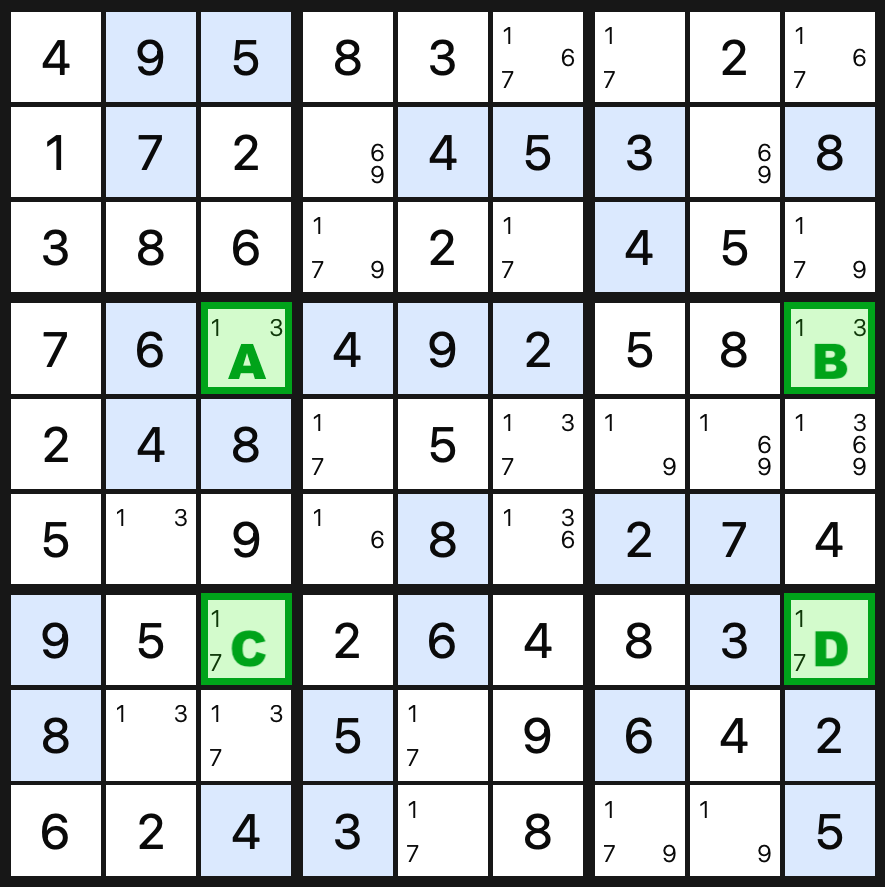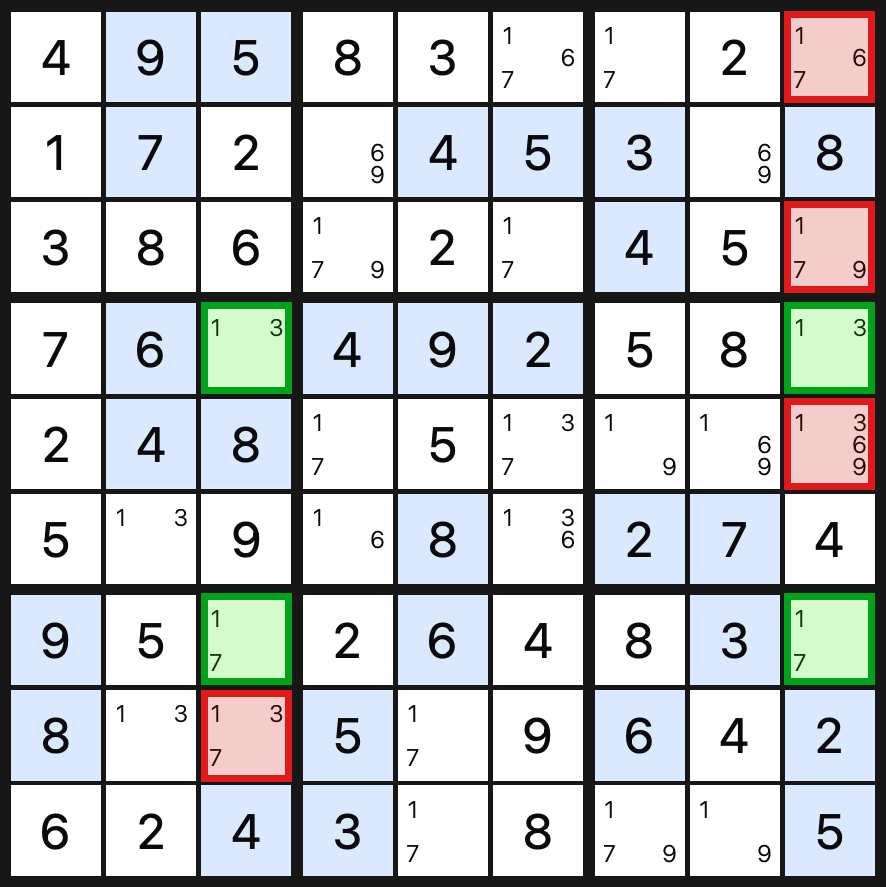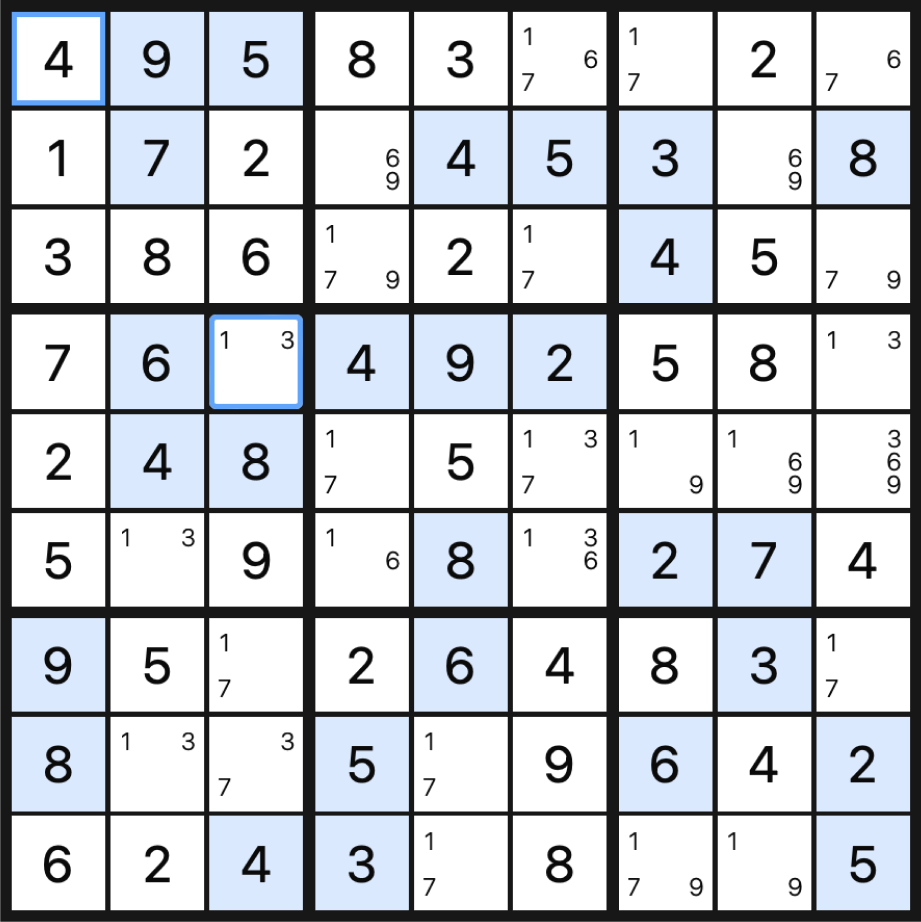X-Wing Strategy: How To Instantly Spot It

The X-Wing is an intermediate Sudoku solving technique that is useful once you have exhausted more basic techniques. It can be used to quickly eliminate a candidate from two rows/columns.
What is an x-wing?

It's easiest to explain an x-wing by example. An x-wing occurs when you have a candidate that forms a rectangle, as you can see by the corners A, B, C, and D. Furthermore, A and B must be the only cells in the upper row that can contain 1. Similarly for the bottom row, C and D are the only cells in the lower row that can contain 1.
Why is an x-wing useful?
There are two beneficial properties if you can find an x-wing.
The first benefit is that once an x-wing is found, either one of the following scenarios is true:
- A and D are 1; or
- B and C are 1.
Let’s reason this out.
Assume that A is 1. Since the B and C share the same row and column as A, this means neither can be 1. Since the B is not 1, therefore the D corner must be 1.
We can apply the same reasoning to when B is 1. We'd conclude that C must also be 1.
Therefore, if we figure out any of the four corners of the x-wing, we will instantly know the value of its diagonal.
The second benefit of the x-wing is that since we know the 1 must be at either AD or BC, the 1 cannot be present in any of the other cells in the columns. We can therefore eliminate all 1s there, as shown in red:

As you can see, we have quickly reduced the number of candidates across two columns using this strategy:

In this article, I have described the row variant of the x-wing, but the same logic applies for columns.
Want to practice finding an x-wing? Play Sudoku here!